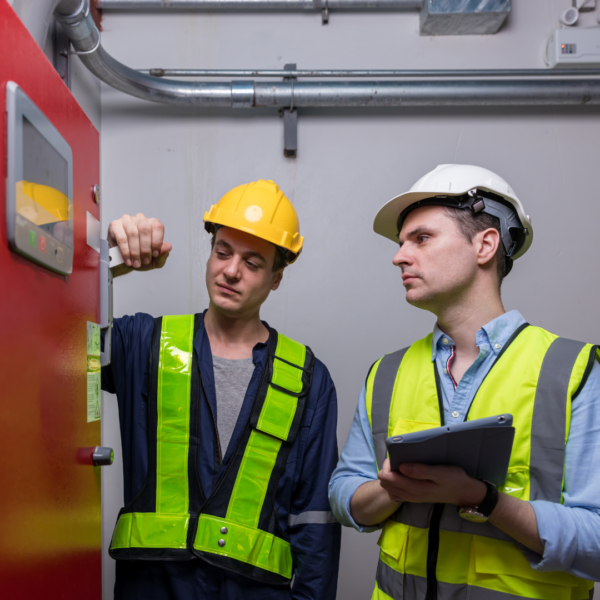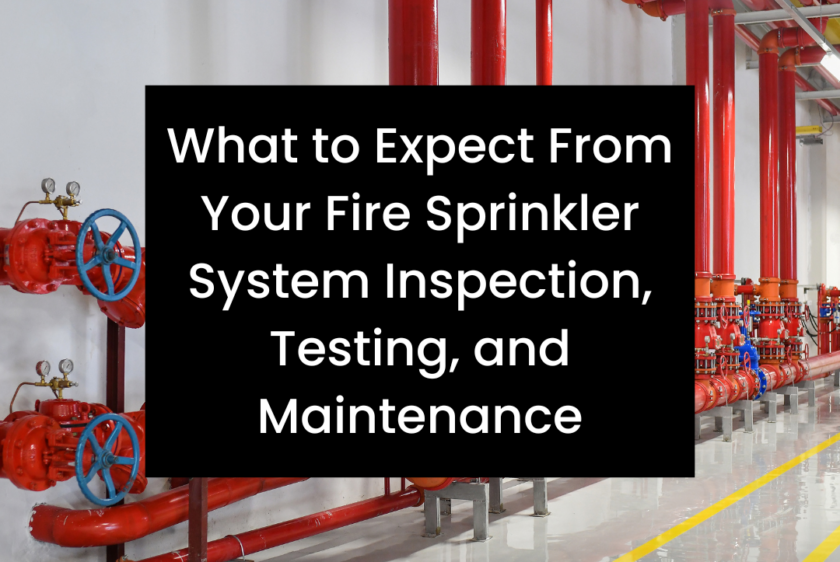Fire sprinkler systems protect property and lives, but their effectiveness hinges on regular testing. The company you hire must thoroughly understand how to test a fire sprinkler system.
This knowledge is vital for ensuring the reliability of your fire safety measures. Choosing a Fire & Life Safety company that excels in this area will provide you with peace of mind, knowing that your safety is in capable hands.
Here’s what you can expect when scheduling a fire sprinkler testing service to keep your facility compliant, ensure safety, and avoid costly repairs.
Why Testing Is Critical
Fire sprinkler systems are designed to activate during an emergency, but without proper testing, you cannot be confident they will function as intended. Regular testing verifies system readiness and ensures compliance with NFPA 25, the standard for inspecting, testing, and maintaining fire sprinkler systems.
Adhering to these requirements is required to stay compliant, maintain safety, meet local fire codes, and avoid potential fines or legal issues.
What Happens During Fire Sprinkler System Testing?
Initial Assessment
The process begins with a walkthrough of your facility to identify the type of fire sprinkler system installed—wet pipe, dry pipe, preaction, or deluge. This step allows technicians to tailor the testing procedures to your system’s requirements.
Testing Procedures
Depending on your system type, here is what the testing phase entails:
- Wet Pipe Systems: The technician simulates activation by manually opening a test valve or heat-activating a sprinkler head to confirm immediate water flow. This ensures there are no obstructions or pressure issues within the pipes.
- Dry Pipe Systems: Testing involves releasing pressurized air from the pipes, causing the dry pipe valve to open and allow water to fill the system. This confirms that the system will function correctly in low-temperature environments.
- Preaction Systems: For these systems, technicians verify that the sequence of events—triggering the detection system, opening the valve, and releasing water—works flawlessly. Whether it is a single or double interlock system, precision is crucial.
- Deluge Systems: Testing a deluge system involves activating the detection system to confirm that water discharges simultaneously from all sprinkler heads. This test is critical in high-risk environments such as industrial or aviation facilities.
Flow and Pressure Verification
Technicians measure water flow and pressure to confirm that the system delivers adequate coverage. These measurements ensure the system meets NFPA and manufacturer standards.
Visual Inspection
Alongside testing, a visual inspection identifies corrosion, leaks, or physical obstructions that could impair system functionality.
The Importance of Inspections and Maintenance
Regular inspections are vital for identifying potential issues before they become problems. Inspections are typically performed more frequently than testing and focus on evaluating the condition of system components, such as sprinkler heads, piping, and alarms. These checks help to detect early signs of corrosion, damage, or wear and tear that could impact performance during an emergency.
In addition to knowing how to test a fire sprinkler system and inspecting it regularly, maintenance plays a key role in ensuring your fire sprinkler system continues to operate smoothly.
Maintenance includes:
- Cleaning sprinkler heads.
- Replacing worn-out parts.
- Updating system components to stay compliant with changing regulations.
This proactive approach keeps your system operational and reduces the risk of system failure when needed most.
How Often Do Fire Sprinkler Systems Need to be Tested?
The frequency with which you have your fire sprinkler system tested varies based on your system type and local regulations. For example:
- Wet and dry pipe systems require quarterly and annual flow testing.
- Preaction and deluge systems involve more frequent checks due to their complexity.
- Backflow prevention devices must also be tested annually to protect water quality.
Your DynaFire technician will guide you through these requirements to help you stay compliant.
The DynaFire Difference: Comprehensive Testing Services

When you choose DynaFire, you are partnering with experts committed to ensuring your fire sprinkler system performs reliably in an emergency.
Customized Testing Solutions
We tailor our services to your system’s specifications and facility’s needs. Whether you manage a healthcare center, data center, or warehouse, our team ensures every aspect of your fire protection system functions as intended.
Thorough Documentation
After testing, we provide detailed reports that include all findings, corrective actions, and a compliance record for AHJ (Authority Having Jurisdiction) review.
Proactive Maintenance Recommendations
If testing reveals deficiencies, we offer targeted maintenance solutions to restore your system’s performance. From replacing faulty components to recalibrating pressure settings, our preventative approach helps extend the life of your system.
Schedule Your Fire Sprinkler System Testing Today
Regular testing is the cornerstone of effective fire protection. At DynaFire, we know how to test a fire sprinkler system and specialize in all aspects of fire sprinkler systems, ensuring safety, compliance, and peace of mind. Contact us today to schedule your service and take the first step toward enhanced fire safety.






